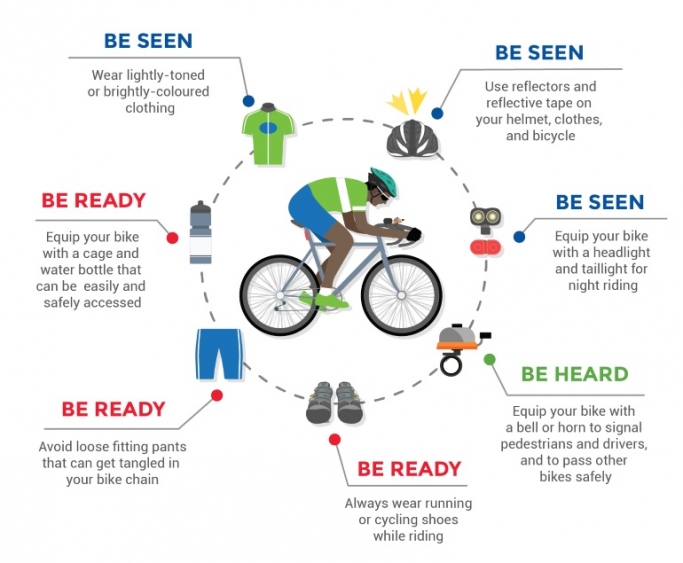
Your Legal Duties and Responsibilities When Riding Your Bicycle
Cyclists in Alberta must abide by the Use of Highway and Rules of the Road Regulation, this Regulation governs the duties and responsibilities cyclists have when they ride their bikes. In addition to the Regulation, some Municipalities, like the City of Edmonton have Bylaws in place that also set out a cyclist’s duties and responsibilities.
Use of Highway and Rules of the Road Regulation
Some of the duties and responsibilities cyclists have under the Regulation include:
- Cyclists should keep both hands on the handlebars, except when signaling or changing gears.
- They should keep their feet on the pedals or footrests when the bicycle is in motion.
- Not more than one rider can be on the bicycle unless it is designed for more than one person.
- Cyclists should operate their bicycles as near as practical to the right curb or edge of the road.
- They should use hand signals when they intend to make a turn or come to a stop.
Safety Tips
Following the law and putting your safety first will decrease your chances of getting into a serious accident. Some tips to keep yourself safe are:
- Always wear a helmet when you ride your bicycle.
- Make sure your bicycle has the proper lights and wear bright clothing so you can be seen.
- Make eye contact with other road users and be more cautious when you are at intersections.
- Do not ride your bike while you are in a marked crosswalk because you are considered a pedestrian while you are in the marked crosswalk.
- Obey the law and all traffic signals which include all stop and yield signs.
The Consequences Can Be Serious if You Fail to Obey the Law
You can be fined if you do not follow the law. But more importantly, you can be held fully or partially responsible for any accident that occurs. Always obey the law and take steps to keep yourself safe when you ride your bicycle.
In one Alberta case, a cyclist came to a rolling stop at a stop sign and she was struck by a vehicle. At trial, the cyclist conceded that had she come to a complete stop she would have avoided the collision. The cyclist was seriously injured from the accident. The Court held the cyclist was two-thirds responsible for the accident and the vehicle driver was only one-third responsible. As a result of the cyclist’s conduct, the Court awarded the cyclist one-third of her damages.
The Courts have also awarded less compensation to cyclists who sustain a brain injury when they are injured in an accident because the cyclist was not wearing a helmet.

